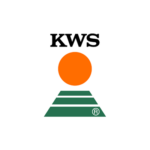High-selenium diet helps to boost heifer fertility
 Craig and Claire Grant © Angus Findlay
Craig and Claire Grant © Angus Findlay A high-selenium cattle diet and focus on optimum pelvic area is helping Aberdeenshire farmers Craig and Claire Grant rear high-quality beef breeding heifers with an average conception rate of 99.9%.
Looking to rear an easy-calving animal, Claire developed a unique formula to calculate the pelvic area of cattle using standard sizes from cattle society databases.
Together with the animal’s date of birth and pelvic measurements, the husband-and-wife duo calculate the standard pelvic area according to age and breed.
See also: How to make routine dairy tasks easier with a calf kitchen
“If the animal is above or below this standard by 15%, it is not carried forward for breeding. Anything more than 5% above or below is rechecked.
“Too small a pelvis does not make for easy calving, while too large means the bones are square and less likely to open and stretch,” says Craig.
High-selenium diet
As the farm’s reputation for breeding heifers began to grow, so too did its strong customer base.
What started out as a herd of 48 cattle grew to 285 Limousin-cross and British Blue-cross heifers.
Striving to continue rearing high-fertility stock, the couple established a strong relationship with their vet, spending £50 a head on vet checks, blood tests and reproductive organ assessments.
It was during one of their vet meetings that the important role of selenium in developing cattle reproductive organs was discussed.
This prompted Craig to develop a bespoke high-selenium diet with his nutritionist.
Within two months of incorporating the mineral pack into the total mixed ration, vet checks revealed reproductive organs were healthier and more prominent.
“When selling on to buyers, the farmers reported stronger cycling and greater fertility – with 99.9% of heifers taking to the bull first time,” says Craig.
He feeds 20kg of mineral mix with 4t of a silage and barley ration per 50 cattle every two days over winter, once cattle come off grass.
Sourcing and selling stock
Cattle are purchased at nine to 12 months and sold at 21-24 months, aiming for natural growth rather than being pushed hard. Target weight is 600kg and animals are weighed regularly.
“We are looking for a lean animal with a slowly grown frame. Provide too much energy and protein and the animal can quickly put on fat, which can reduce fertility,” says Craig.
However, he notes they need to supply a good range of quality cattle to cater for their wide spectrum of buyers.
Any animal with the wrong shape, poor feet, below-average growth or an inappropriate temperament is removed from the breeding herd and sent to the fattening pen. This makes up an average of 8% of the herd each year.
“We have to draw a line to ensure high standards and repeat customers,” says Claire.
A proportion of stock is sourced from 20% of their own customers, creating a niche circular economy.
“This works well for farmers who don’t want to replace their current bull, as they can sell back some heifer calves, which we can rear and sell on.”
“We set a margin per head for our stock and don’t command the highest price to ensure the entire supply chain is catered for,” says Craig.
Improved handling system
Investing in a new cattle-handing system and shed in 2022 transformed safety and ease of cattle handling for both farmworkers and potential buyers.
The facility is kitted out with a drawing ring with four entry/exit points and “yes”, “no” and “maybe” pens, which allows potential buyers to safely view cattle and make informed purchases.
Selenium – an important trace element
Known for its role in boosting fertility and the immune system in cattle, selenium also reduces metritis, ovarian cysts and embryonic death.
Rations high in fermentable nitrates, sulfates, carbohydrates and calcium can restrict selenium in the diet.
It is estimated beef cattle and dairy cows require 100μg/kg dry matter (DM) and 300μg/kg DM of selenium, respectively.
Source: Selenium in Cattle: A Review by Youcef Mehdi and Isabelle Dufrasne
Enter the 2024 Farmers Weekly Awards
 Farmers Weekly 2024 Mixed Farmer of the Year is sponsored by KWS. Enter yourself or nominate someone online.
Farmers Weekly 2024 Mixed Farmer of the Year is sponsored by KWS. Enter yourself or nominate someone online.
